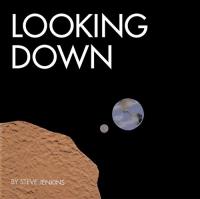Key Information
Focus
When To Use This Strategy
Appropriate Group Size
What is inferencing?
We learn about some things by observing or experiencing them first-hand. In contrast, when we make inferences, we reach conclusions based on evidence and reasoning. We figure things out by applying our own knowledge and experience to the situation at hand. Helping students understand when information is implied, or not directly stated, will improve their skill in drawing conclusions. Inferential thinking is a complex skill that will develop over time and with experience.
Why teach inferencing?
- Inferencing is a prerequisite for higher-order thinking (Marzano, 2010)
- Inferencing skills are needed across the curriculum, from English language arts and math to science and social studies.
How to teach inferencing
Helping kids see that they already know how to make inferences can build their confidence and introduce them to the concepts and vocabulary they’ll need in order to talk about their inferential thinking. Many models for teaching inferencing are intended for use with text but can work just as well to guide students through making inferences about pictures, either single images or wordless picture books, as a stepping stone to making inferences about text. With explicit instruction, students can learn to recognize inferences they make about their reading, check their thinking to be sure it makes sense, and adjust their inferences as they get new information.
One simplified model for teaching inferencing is based on the following assumptions:
- We need to find clues to get some answers.
- We need to add those clues to what we already know or have read.
- There can be more than one correct answer.
- We need to be able to support inferences with evidence.
In this model, teachers pose four questions to students to facilitate a discussion about inferences (Marzano, 2010). The goal is for students to internalize these questions so they can be aware of — and evaluate — their own thinking.
- What is my inference?
This question helps students become aware that they may have just made an inference by filling in information that wasn’t directly presented. - What information did I use to make this inference?
This helps students understand the different types of information they use to make inferences. This may include information presented in the text, or it may be background knowledge that a student brings to the learning setting. - How good was my thinking?
Once students have identified the premises on which they’ve based their inferences, they can engage in the most powerful part of the process — examining the validity of their thinking. - Do I need to change my thinking?
The final step is for students to consider possible changes in their thinking. The point here is not to invalidate students’ original inferences, but rather to help them develop the habit of continually updating their thinking as they gather new information.
One model that teachers can use to teach inference is called “It says, I say, and so” developed by Kylene Beers (2003). Take a look at these graphic organizer examples from ”Goldilocks and the Three Bears,” as well as the steps to solving a math problem about area and diameter.
Watch a demonstration (whole class, grades K-2)
The teacher walks through kindergarten, first, and second grade lessons using non-text-based strategies to lay the groundwork for making inferences about text. Watch from about 1:12–9:37. (Houston Independent School District)
Watch a lesson (whole class, grade 2)
At Stillmeadow Elementary in Stamford, Connecticut, reading coach Elke Blanchard of Literacy How teaches her students to find clues in the text of a story and combine them with their own knowledge to make inferences about what the story is about. (From our sister project, Reading Universe )
Watch a lesson (small group, grade 4)
The teacher guides students as they work in pairs and as a class to make inferences about a character using evidence from the text. She narrates the steps of the lesson and explains how to differentiate follow-up instruction based on students’ work. (EngageNY)
Watch teacher tips
The teacher explains how she structures lessons on inferring using whole-class read-alouds of Mo Willems’s “Elephant and Piggie” and “Pigeon” book series. Watch from about 6:07. (Susan Jones Teaching)
Collect resources
- The Question-Answer Relationship (QAR) strategy reinforces inferential thinking. In QAR, students learn that while some questions are “Right There” in the text, others require readers to “Think and Search”—bringing together evidence from the text with their own thinking — in order to draw a conclusion. The QAR strategy helps students recognize and answer non-text-dependent questions, too, but it’s those “Think and Search” questions that ask readers to infer. Visit the QAR strategy page for videos, lesson plans, and graphic organizers.
- Inferring about characters This lesson from ReadWriteThink uses a think-aloud procedure to model how to infer character traits and recognize a character’s growth across a text. Students also consider the underlying reasons of why the character changed, supporting their ideas and inferences with evidence from the text.
- Download this set of inference graphic organizers ›
- Into the Book has an interactive activity that helps young children learn about inferring. In the interactive, students try to infer meaning in letters from virtual pen pals. They try to answer two questions: “WHERE is your pen pal?” (inferences about location) and “WHO is your pen pal?” (inferences about personality). Students search for clues in the text, then choose from three possible inferences for each clue.
- Virtual pen pal interactive
- Virtual pen pal teacher guide (click “Online Activity Teacher Guide”)
- Riddles are one way to practice inferential thinking skills because successful readers make guesses based on what they read and what they already know. The object of this online riddle game is to infer what is being described by the clues you read. See this inference riddle game ›
- BrainPop Jr. offers several activities for teaching inference, and they offer resources for teachers and parents. See inference activities ›
Differentiate instruction
For second language learners, students of varying reading skill, and younger learners
- Provide images or video clips for students who may not be able to negotiate the text or by having students draw rather than write their inferences.
- Use graphic organizers like the “It says, I say, So” one to make the steps from observation to inference more explicit.
- Model the observation to inference process over and over again, using as many real-life examples as possible.
- Recognize that the background knowledge upon which inferences are drawn will be different from student to student. Reassure students that answers can be different, but all should be made based on evidence.
Use across the content areas
Math
The Math Standards from the National Council of Teachers of Mathematics (NCTM) identify standards for PreK-12 students that include developing and evaluating inferences and predictions that are based on data. For young students, the standards specifically state the following:
- Pre-K–2 Expectations: In pre-K through grade 2, all students should discuss events related to students’ experiences as “likely” or “unlikely.”
- Grades 3–5 Expectations: In grades 3–5, all students should propose and justify conclusions and predictions that are based on data and design studies to further investigate the conclusions or predictions.
Science
- Science teachers spend time helping students develop their observation skills. Inferring and observing are closely related, but they are not identical. Observation is what one sees, inference is an assumption of what one has seen. Observation can be said to be a factual description, and inference is an explanation to the collected data. It’s not a guess. If an observation can be termed as a close watch of the world around you through the senses, then inference can be termed as an interpretation of facts that has been observed.
- Teachers can start out providing simple observations:
- Observation: The grass on the playground is wet.
- Possible inferences: It rained. The sprinkler was on. There is morning dew on the grass.
- Observation: The line at the water fountain is long.
- Possible inferences: It’s hot outside. The students just came in from recess.
- As you’re working to develop these skills, encourage your students to incorporate their scientific vocabulary into their statements. “From what I observe on the grass, I infer that…”
- Learn more about how to use inference, and other science process skills, to help students understand our water resources. More on science process skills ›
- This strategy guide from Seeds of Science introduces an approach for teaching about how scientists use evidence to make inferences. The guide includes an introductory section about how scientists use evidence to make inferences, a general overview of how to use this strategy with many science texts, and a plan for teaching how scientists gather evidence to make inferences. See teaching inference strategy guide ›
- This lesson from ReadWriteThink uses science to engage students in the process of making inferences. First, students work through a series of activities about making inferences. Then they read a booklet of descriptions of a series of mystery objects that are placed under a microscope. Finally, they look through each microscope and use the formula of schema + text clues = inference to make their own inferences about the identity of each mystery object. See science lesson plan ›
Social Studies
- In this Teacher Guide from the National Portrait Gallery at the Smithsonian, students use clues in a portrait to infer things about George Washington and his life. They work to identify visual clues the artist used, they compare various portraits of George Washington, and discuss the importance of the different portraits as visual records. See teacher guide ›
- Often, inferring is introduced to students by using familiar symbols, activities, and environments from which they automatically draw inferences or make predictions (an inference about the future). For example, suppose you are about to begin a unit on the Great Depression. You might have students view a picture of the exterior of a mansion and then of a soup line. Then, through questioning, students focus on details, making inferences about the people who live in both places, their socioeconomic status, the kinds of food they eat, the kinds of activities they pursue.
- Parents can help to build these skills at home. For ideas to share with parents, see our Growing Readers tip sheet, Making Inferences and Drawing Conclusions (in English and Spanish).
Learn More
- Discover more about inferring, predicting, and other metacognitive strategies in the article Key Comprehension Strategies to Teach.
- Deepen your knowledge about teaching reading comprehension in our self-paced module Reading 101: Comprehension.
See the research that supports this strategy
Cain, K., Oakhill, J., & Lemmon, K. (2004). Individual differences in the inference of word meanings from contexts: The influence of reading comprehension, vocabulary knowledge, and memory capacity. Journal of Educational Psychology, 96, 671-681.
Elleman, A. M. (2017). Examining the impact of inference instruction on the literal and inferential comprehension of skilled and less skilled readers: A meta-analytic review. Journal of Educational Psychology, 109(6), 761–781. https://doi.org/10.1037/edu0000180
Gregory, A.E., & Cahill, M. (2010, March). Kindergartners Can Do It, Too! Comprehension Strategies for Early Readers. The Reading Teacher, 63(6), 515-520.
Magliano, J.P., Trabasso, T., & Graesser, A.C. (1999). Strategic processing during comprehension. Journal of Educational Psychology, 91(4), 615-629.
Marzano, R. (2010). Teaching inference . Educational Leadership, 67(7), 80-01.
Ozgungor, S., & Guthrie, J. T. (2004). Interactions among elaborative interrogation, knowledge, and interest in the process of constructing knowledge from text. Journal of Educational Psychology, 96(3), 437-443.
Tarchi, C. (2015) Fostering reading comprehension of expository texts through the activation of readers’ prior knowledge and inference-making skills. International Journal of Educational Research, Volume 72, 80-88. https://doi.org/10.1016/j.ijer.2015.04.013
Children’s books to use with this strategy
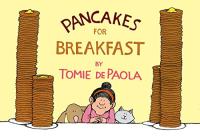
Pancakes for Breakfast

Wave
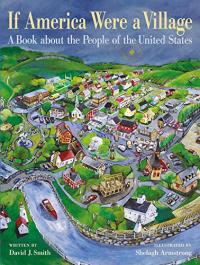
If America Were a Village: A Book About the People of the United States
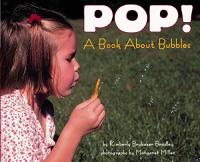
Pop! A Book About Bubbles
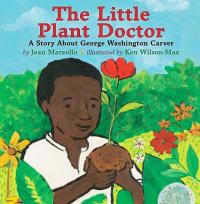
The Little Plant Doctor: A Story About George Washington Carver
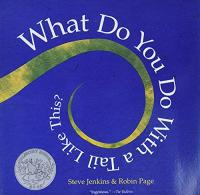
What Do You Do with a Tail Like This?
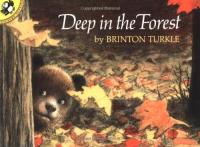
Deep in the Forest
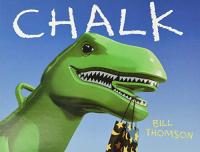
Chalk
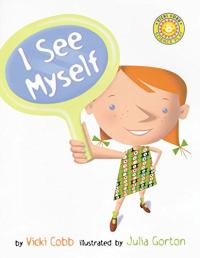
I See Myself
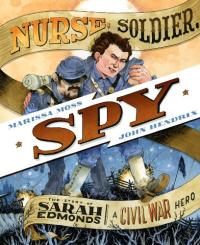
Nurse, Soldier, Spy: The Story of Sarah Edmonds, A Civil War Hero
